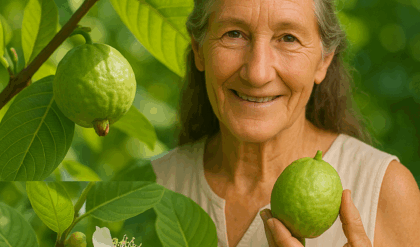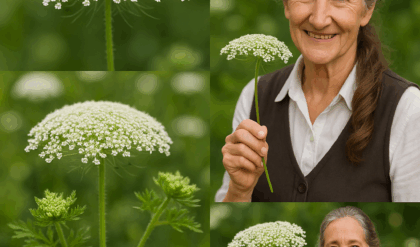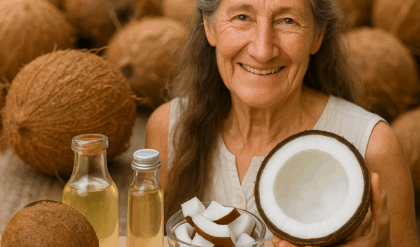🌼 What if a single plant could repel pests, nourish your body, and dazzle your garden with vibrant blooms? Meet nasturtiums (*Tropaeolum majus*), the unsung heroes of backyards worldwide. These cheerful, edible flowers are more than just eye candy—they’re a gardener’s ally, a culinary delight, and a natural remedy rolled into one. Packed with vitamins, easy to grow, and bursting with peppery flavor, nasturtiums belong in every garden and kitchen. Curious about how this versatile plant can transform your space and plate? Dive into this guide to explore their science-backed benefits, creative uses, and foolproof growing tips.

Why Nasturtiums Are a Gardener’s Dream
Nasturtiums are a triple threat: they protect your garden, nourish your body, and thrive with minimal effort. Native to South America but now beloved globally, their bright orange, yellow, and red flowers add flair to any landscape. Rich in vitamins A and C, plus antimicrobial compounds like glucosinolates, nasturtiums have been used in traditional medicine and cuisine for centuries. A 2023 study on their pest-repelling properties highlights their role as a natural garden guardian, making them a sustainable choice for eco-conscious growers. Whether you’re a novice or a seasoned gardener, nasturtiums deliver beauty and utility in spades.
Key Benefits of Nasturtiums
Nasturtiums offer a blend of practical, nutritional, and ecological advantages, making them a must-have plant.
🛡️ Natural Pest Control
Nasturtiums emit a scent that repels aphids, whiteflies, and cucumber beetles, acting as a companion plant for crops like tomatoes and beans, per a 2022 agricultural study.
🌸 Edible Flowers
Their vibrant blooms, with a peppery, radish-like flavor, are perfect for salads, garnishes, or teas, adding both taste and visual appeal.
🍃 Nutritious Leaves
Packed with vitamins A and C, nasturtium leaves support immunity and skin health, making them a nutrient-dense addition to meals, as noted in a 2023 nutrition review.
🌱 Effortless to Grow
Requiring minimal care, nasturtiums thrive in poor soils and bloom prolifically, ideal for beginners or low-maintenance gardens.
How to Enjoy Every Part of Nasturtiums
Every part of the nasturtium plant is edible, offering endless culinary possibilities with a peppery kick.
🌺 Flowers
Toss fresh blooms into salads with arugula and feta, use as a garnish for soups, or steep in hot water for a zesty, immune-boosting tea.
🍃 Leaves
Add young leaves to sandwiches, blend into pestos, or sauté with garlic as a spinach alternative for a nutrient-packed side dish.
🌾 Seeds
Pickle green seeds in vinegar and spices for a caper-like condiment, perfect for fish dishes or charcuterie boards.
🥗 Stems
Chop tender stems for stir-fries or snack on them raw for a crunchy, spicy bite, adding texture to meals.
Tips for Growing Nasturtiums
Nasturtiums are a breeze to cultivate, thriving in diverse conditions with these simple guidelines.
☀️ Full Sun to Partial Shade
Plant in areas with 6–8 hours of sunlight daily, though they tolerate some shade with slightly fewer blooms.
🌍 Well-Draining Soil
Use sandy or loamy soil with a pH of 6.0–7.0. Avoid overly rich soils, as they reduce flowering and promote leaf growth.
🌱 Direct Sowing
Sow seeds ½ inch deep in spring after the last frost or in fall for warmer climates, spacing 8–12 inches apart. Germination takes 7–14 days.
✂️ Deadhead for More Blooms
Pinch off faded flowers to encourage continuous blooming and prevent seed formation, extending the flowering season.
Additional Uses of Nasturtiums
Beyond the garden and kitchen, nasturtiums offer ecological and medicinal benefits, enhancing their value.
🌻 Companion Planting
Plant near vegetables like cucumbers or squash to repel pests and attract pollinators like bees, boosting garden health, per a 2023 companion planting study.
🩺 Medicinal Properties
Their antibacterial and anti-inflammatory compounds, studied in a 2022 herbal review, help treat minor infections, sore throats, or skin irritations when used as teas or poultices.
Precautions for Safe Use
Nasturtiums are generally safe, but these precautions ensure they’re suitable for your garden and diet.
🩺 Consult a Healthcare Provider
Those with kidney issues or on medications should consult a doctor, as nasturtiums’ high vitamin C content may interact in rare cases.
🧪 Test for Allergies
Taste a small leaf or apply a crushed flower to skin to rule out sensitivities, which may cause mild digestive upset or rashes.
🚫 Avoid Contaminated Areas
Harvest from clean, pesticide-free zones, avoiding roadsides or treated lawns, as nasturtiums can absorb environmental toxins.
🥄 Moderate Consumption
Limit to a handful of leaves or flowers daily to avoid digestive discomfort from their spicy compounds.
Why Nasturtiums Are a Garden Essential
Nasturtiums redefine versatility, blending pest control, nutrition, and beauty in one vibrant package. Their ability to repel pests, nourish with vitamins, and thrive with ease, backed by studies like a 2023 review of their glucosinolates, makes them a gardener’s dream. Sustainable, budget-friendly, and delicious, they’re perfect for urban plots, rural farms, or balcony pots. From pickled seeds to peppery salads, nasturtiums elevate meals and gardens, proving that great things come in colorful, edible blooms.
Plant Nasturtiums Today
🔥 Ready to grow a plant that protects, nourishes, and dazzles? Nasturtiums, with their pest-repelling, edible, and healing powers, are your key to a thriving garden and vibrant plate. Sow seeds, savor blooms, and let *Tropaeolum majus* transform your space. Harvest safely, experiment boldly, and embrace this flower’s magic. Here’s to a greener, tastier future with nasturtiums!





